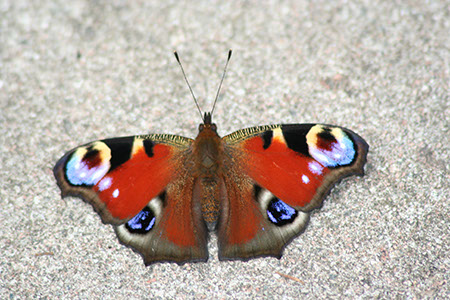VEDA News
Powered by VEDA“I’ve been doing VRT for two months for vestibular neuritis. My constant vertigo stopped for days, then came back. Why did my symptoms stop and then resume?” That is great news, good job to you for this achievement! The fact that your constant vertigo stopped for days is a big stepping stone in your recovery. Now, take a deep breath and know that you are not regressing, or causing further harm to your system. What you’re experiencing is very common during recovery from vestibular neuritis, especially when doing Vestibular Rehabilitation Therapy (VRT). Healing from a vestibular injury can be tricky and challenging to navigate. It isn’t a straight line; it’s more like a winding path with stretches of smooth ground, followed by a few bumps that catch you off guard. Let’s walk through why symptoms often improve… and then flare up again. Recalibration isn’t linear Your brain is still recalibrating. After […]
The post Ask Fiona: Why do symptoms fluctuate when I’m doing VRT? appeared first on Vestibular Disorders Association.
VEDA - Published Tue Dec 16 2025 18:27 View Full Story...
This article is adapted from The Great Balancing Act: An Insider’s Guide to the Human Vestibular System, published by Columbia University Press. Copyright (c) 2025 Jeffrey D. Sharon. Used by arrangement with the Publisher. All rights reserved. It’s been said that half of medical school is necessary to learn the art of healing, and the other half is required to master the vocabulary. For me, it’s a love-hate relationship. Some of the terms seem to be overly long and complicated for no reason at all. For example, the general name for my field of medical expertise is “Otolaryngology” (which is synonymous with Ear, Nose, and Throat). The name is too long, too hard to pronounce, too hard to spell, and generally confusing for people. Furthermore, despite its length, the term isn’t accurate. “Oto” translates to “ear,” and “laryngo” translates to throat. That leaves out most of the disease areas under our […]
The post Like a Rolling Stone: BPPV appeared first on Vestibular Disorders Association.
VEDA - Published Sat Dec 13 2025 00:38 View Full Story...
Article Summary Persistent Postural-Perceptual Dizziness (PPPD) causes dizziness and unsteadiness that crowds or other busy places can trigger, but it doesn’t involve spinning (vertigo). This condition usually starts after an event that causes dizziness or balance issues, but it can also occur for no apparent reason. Treatment options include medication, balance therapy, and counseling. History PPPD was first identified in 1986 by German doctors who called it phobic postural vertigo (PPV). They noticed symptoms like dizziness without spinning and unsteadiness, often triggered by stress or crowded places. At the time, the signs of PPV were thought to include having an obsessive-compulsive personality, feeling a little depressed, and experiencing anxiety. However, further research on PPV found that it isn’t considered a mental health disorder. Instead, it’s seen as a condition of the inner ear that also involves behavioral aspects. Researchers are also starting to understand how PPPD affects the brain. Studies […]
The post Persistent Postural Perceptual Dizziness – What You Need To Know appeared first on Vestibular Disorders Association.
VEDA - Published Tue Dec 9 2025 18:54 View Full Story...
What this research is about Ménière’s disease (MD) is a condition affecting the inner ear that causes attacks of vertigo (spinning sensation), fluctuating hearing loss, tinnitus (ringing in the ear), and ear pressure or fullness. Although it’s been known for many years, its cause remains unclear. This review examines what we know about the genetics of MD—how genes may contribute to the disease—and how that knowledge may help us understand who gets it and how to treat it. Why the genetic approach matters The authors point out that MD is likely a genetic disorder, and environmental factors can trigger the symptoms (like loud noise, infections, autoimmunity, and allergies). Anatomical differences in the temporal bone also suggest a genetic origin. Because we still manage MD primarily by symptom control (diet, salt restriction, diuretics, surgery in some cases), understanding the underlying genetic causes could lead to better, more specific treatments. What genetic studies have found so […]
The post Dissecting the genome in Ménière disease: a review appeared first on Vestibular Disorders Association.
VEDA - Published Thu Dec 4 2025 23:41 View Full Story...
A Legacy of Leadership and Philanthropy The Vestibular Disorders Association (VeDA) is privileged to count among its most steadfast champions Dr. P. Ashley Wackym, a globally recognized neurotologist, past Chair of VeDA’s Medical Advisory Board, and long-time Trustee. Each November, Dr. Wackym has demonstrated his deep commitment to VeDA’s mission through a generous Giving Tuesday gift—an investment that has helped sustain vital patient education, advocacy, and research initiatives for the vestibular community. A Distinguished Career in Neurotology Dr. Wackym is an internationally respected surgeon, researcher, and educator whose career has been dedicated to advancing the understanding and treatment of vestibular disorders. He has authored hundreds of peer-reviewed publications and contributed to groundbreaking work in the diagnosis and surgical management of balance disorders, hearing loss, and skull base pathology. As a leader in his field, Dr. Wackym has trained countless physicians and researchers, ensuring that the next generation of clinicians is […]
The post Honoring Dr. P. Ashley Wackym appeared first on Vestibular Disorders Association.
VEDA - Published Wed Nov 12 2025 15:00 View Full Story...
Article Summary Research on diet and vestibular disorders is limited, but many people with Ménière’s disease, secondary endolymphatic hydrops, and vestibular migraines find that changing their diets helps manage their symptoms. These changes might involve adjusting the types or timing of foods they eat. Changes in Your Diet Can Reduce Dizziness Some individuals with Ménière’s disease (also called primary idiopathic endolymphatic hydrops), secondary endolymphatic hydrops, or vestibular migraine notice that dietary changes help, while others may not find any benefits. Since everyone is different, it’s important to find what works best for you. There is not much research, so more studies are needed to clearly understand how diet affects these disorders. Even if certain foods don’t trigger your symptoms, a healthy diet is important for everyone. It can help prevent other health problems, like heart disease and diabetes. A good starting point is to follow national nutrition guidelines, which suggest […]
The post Dietary Considerations with SEH, Meniere’s Disease & Vestibular Migraine – What You Need to Know appeared first on Vestibular Disorders Association.
VEDA - Published Sat Nov 8 2025 02:39 View Full Story...
Article Summary Benign Paroxysmal Positional Vertigo (BPPV) is the most common reason people feel dizzy, specifically a spinning feeling called vertigo. It happens when tiny crystals in the inner ear, called otoconia, get loose and move into the wrong part of the ear. This can make you feel dizzy when you change positions or move your head. What Happens During a BPPV Episode? BPPV is the most common vestibular disorder. BPPV is not dangerous, but it can be annoying. Here’s what it means: Benign: It’s not life-threatening. Paroxysmal: It comes in sudden and brief episodes. Positional: It happens with certain head movements. Vertigo: A false sense of spinning or moving. During a BPPV episode, the loose crystals move with gravity, causing fluid in the ear to move when it normally wouldn’t. This confuses the brain and makes you feel like you’re spinning, even when you’re not. These dizzy spells usually […]
The post Benign Paroxysmal Positional Vertigo (BPPV) – What You Need to Know appeared first on Vestibular Disorders Association.
VEDA - Published Sat Nov 8 2025 02:11 View Full Story...
Article Summary During vestibular rehabilitation therapy (VRT), doing exercises at home is important. A physical therapist (PT) or occupational therapist (OT) will create a personalized exercise plan for you. It’s not recommended to do these exercises without a diagnosis and plan from a vestibular expert. Remember to check with a doctor before starting these exercises to make sure they’re right for you! These exercises can be helpful, but they don’t work for everyone. These exercises can take time to kick in and might make your balance or dizziness feel worse at first. The Vestibular Disorders Association is not responsible for any results from doing these exercises. Can balance retraining exercises help with dizziness? Balance retraining is a type of therapy that can help you feel better if you’re dealing with long-lasting dizziness. However, it’s important to know the difference between two types of dizziness: Vertigo is a strong spinning feeling […]
The post Home-based Exercise – What You Need to Know appeared first on Vestibular Disorders Association.
VEDA - Published Sat Nov 8 2025 01:59 View Full Story...
Overview This study examines how dizziness impacts people’s everyday lives, affecting their physical, emotional, cognitive, and social well-being. Although dizziness is a common symptom that sends millions of people to the doctor each year, healthcare providers often lack tools that fully capture the extent to which it disrupts daily life. To bridge that gap, researchers from the University of Michigan and its partner institutions interviewed adults living with various types of dizziness to build a more comprehensive picture of its real-world impact. Why This Matters Approximately 15% of U.S. adults experience dizziness each year, and the incidence increases with age. Yet the questionnaires most often used in clinics (like the Dizziness Handicap Inventory) focus mainly on physical symptoms, missing emotional, cognitive, and social aspects. The researchers’ goal was to design a framework that reflects the full experience of dizziness—something that could later form the basis for a new “patient-reported outcome” […]
The post Dizziness and Its Effect on Health-Related Quality of Life appeared first on Vestibular Disorders Association.
VEDA - Published Wed Nov 5 2025 16:53 View Full Story...
What the study is about Our balance depends on tiny “hair cells” inside the inner ear that sense motion. Certain medicines and chemicals—called ototoxic substances—can damage or kill these hair cells, causing dizziness or balance problems that often persist. Scientists wanted to know what happens before the hair cells die: do they show early signs of stress that could help us spot damage sooner? How the study was done Researchers examined the genes that are turned on or off in the inner-ear balance organs of rats and mice exposed to two different ototoxic substances: an antibiotic (streptomycin) and a chemical (IDPN). They collected tissue samples after various exposure times and compared them with those of healthy animals. Using genetic analysis (RNA sequencing), they measured which genes changed activity. What they found The first change they observed was that genes normally active in healthy hair cells began to shut down prematurely, […]
The post Research: Before the Balance Cells Die: Early Clues to Inner Ear Damage appeared first on Vestibular Disorders Association.
VEDA - Published Mon Nov 3 2025 18:26 View Full Story...









